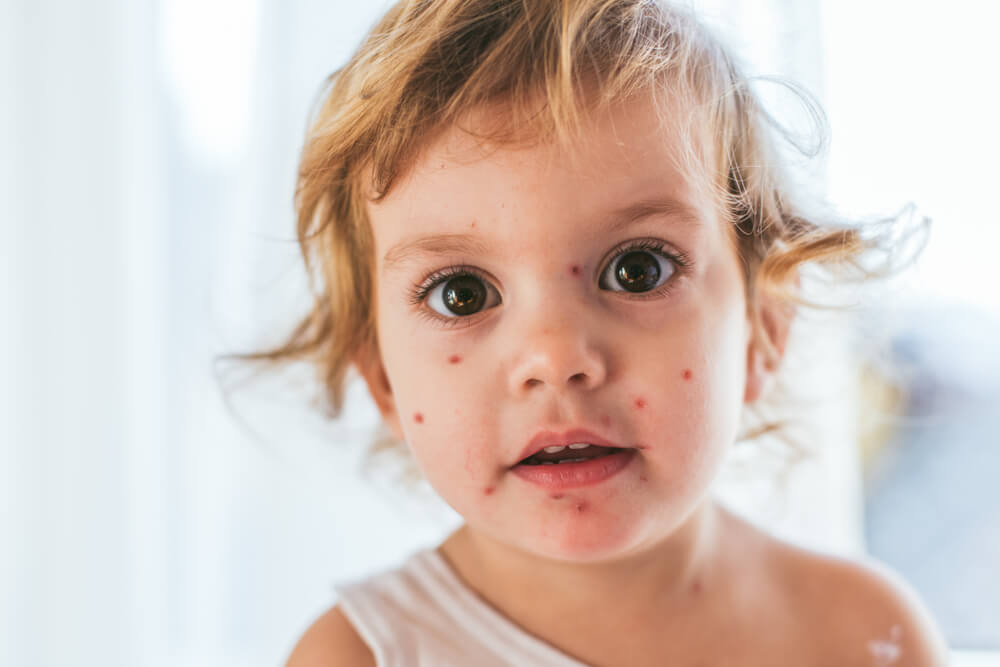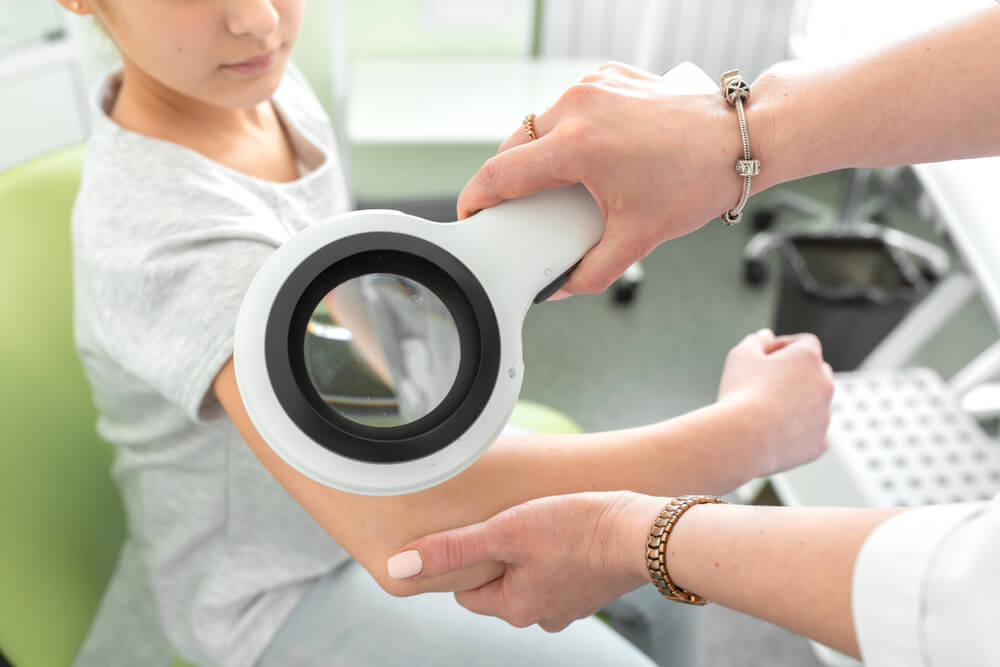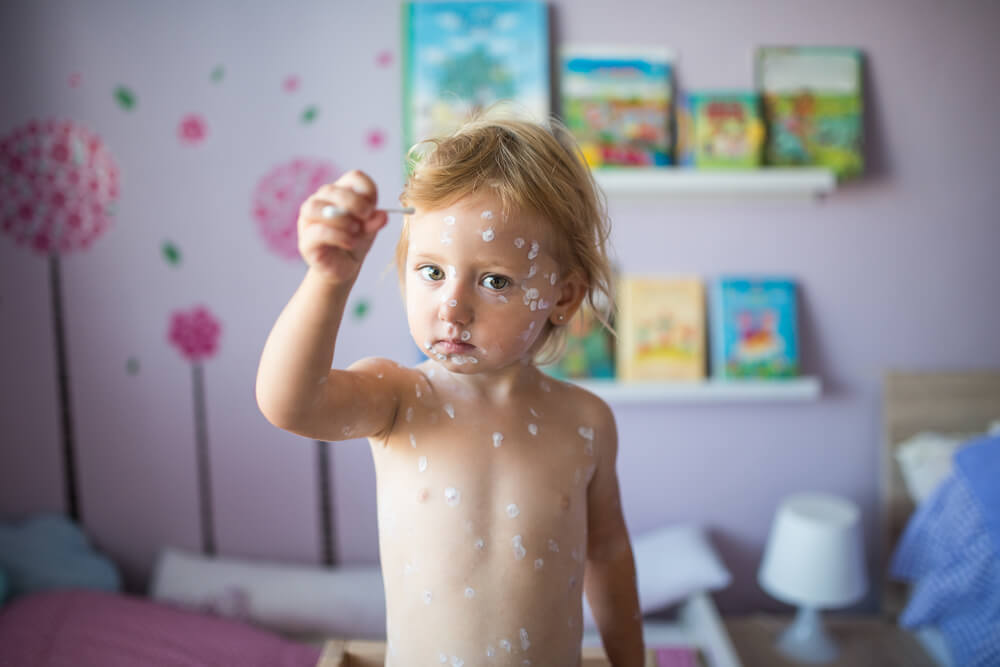Our children’s health is the most important thing for us in life. As parents, it’s our responsibility to follow through on every skin bump or complaint that something hurts. This is especially true when our kids are small and can’t express themselves fully yet.
When it comes to children’s rashes, anything from redness or itch can seem concerning. However, not everything is a cause for panic as the most common rashes are easily recognizable and treated.
What Are the Most Common Childhood Rashes?
The chances are that your child isn’t the first or last to deal with a rash. This is good news, as it can help you stay calm, determine what kind of rash your kid has, and help you get adequate treatment.
Does My Child Have Chickenpox?

Chickenpox used to be one of the most common childhood rashes, but with vaccines available today, most children don’t have to suffer from it. This rash is caused by a virus called varicella and is followed by flu symptoms. Fever is to be expected, as well.
The manifestation of this rash in kids is rather unique, so you can easily identify if your child has chickenpox. You’ll notice red bumps spreading all over your child’s body, and they’ll probably complain of itchiness.
The bumps are actually a mix of crusted scabs, blisters, and spots that can manifest for around a week. Your kid is contagious in this stage, so keep them away from other family members who haven’t had chickenpox or haven’t been vaccinated against it.
Could It Be Ringworm?
Ringworm’s fungal infection likely causes scaly, bumpy red patches on the skin. This is one of the most common kid rashes, as it’s highly contagious and can be transferred through contact and sharing clothes.
Just like any viral rash in children, fungi rashes shouldn’t be treated with antibiotics. Luckily, another treatment option is easily available. All you have to do is apply the right ointment for seven to ten days.
How Common Is Impetigo?
While it may look similar to ringworm, impetigo is actually caused by bacteria. A simple visit to our dermatologist in Deerfield Beach FL can help you determine whether the rash is caused by bacteria or fungus and get the proper treatment.
The most common locations for impetigo include the nose and mouth, but you may notice it anywhere on the body. Scratching will make it worse, so try to make your kid resist that urge.
The Signs of Fifth Disease
Your child may experience flu symptoms and have a red rash on their cheek. The symptoms are mild and often go away on their own. Even though it has an unfortunate name, this viral rash in children is usually no cause of concern.
The rash typically spreads to the body in the same red color. Children’s rashes caused by viruses, like this one, should not be treated with antibiotics.
How Hives Manifest
Common childhood rashes can also stem from allergies. Painful, itchy bumps or welts can be noticed on the body, and they’re usually red and small. Think about common allergens such as dairy, nuts, fruit, and fish your kid might have consumed that day. Some medication and some viruses can cause hives, as well.
While hives on their own aren’t dangerous, you should be concerned if your kid has trouble breathing; i.e., if they’re wheezing or coughing.
Symptoms of Scarlet Fever
Your child may experience a fever, sore throat, and an itchy rash that makes the skin feel like sandpaper. Scarlet fever is another one of the most common rashes in childhood that happen because of a bacterial infection. This time, the bacteria in question is streptococcus.
Children’s rashes that stem from bacteria are best treated with antibiotics.
Common Kid Rashes: Contact Dermatitis
Contact dermatitis is characterized by red pimples or bumps that occur over one or two days after your kid has been in contact with an allergen. As this is one of the most common kid rashes to reoccur, it’s good to do an allergen test so you know what you should avoid.
While contact dermatitis is usually mild and heals by not being in contact with the allergen, it can still be annoying. In fact, it takes one to two weeks for the rash to completely heal. Using topical steroids can help speed along the process and offer some relief from potential itchiness.
Could My Kid Have Eczema?
Also called atopic dermatitis, eczema is the most common rash in kids with asthma or established allergies. It’s itchy and appears in red patches all over the body, with the cheeks, elbows, and knees being the most common.
Pediatric dermatology will usually have the answer for the best treatment options for your child. Ointments, creams, and lubricating lotions can be bought without consulting a doctor, but they won’t always make the rash go away.
When Are Children’s Rashes a Concern?
Most rashes go away on their own and usually aren’t a huge cause of concern. If the rash is caused by bacteria or a virus, treating that underlying cause will also make the rash go away. If we’re talking about allergies, it’s best to devise a treatment plan with a professional to keep the allergies under control.
However, any rash in kids that stems from allergies can be dangerous. This is because it’s usually followed by other symptoms that constrict breathing. On top of that, if your kid develops a high fever, complains about feeling nauseous, or experiences confusion, then you should get medical attention immediately.
What Can You Do About Common Kid Rashes?

Rashes are just a normal part of childhood, so there isn’t a lot you can do to prevent all of them. Minimizing the possibility of viral rashes in children can be done by making sure all of their vaccines are up to date.
Rashes that stem from allergies can be controlled by not exposing your child to the allergen, while bacteria-induced rashes are best treated with antibiotics.
The main thing you can do is check your child’s body during changing or bathtime daily, and listen to them if they voice any concerns.
Conclusion
Skin rashes start occurring at a very young age, which is why it’s good news our experts work with children over two years old. As a parent, it’s perfectly normal to be concerned about your child’s rashes. Even if it is not serious, you will have done the right thing by taking your kid to the dermatologist.
What are your thoughts on this article? Has it lessened your fears? Feel free to call us with concerns, questions, and feedback at 954- 481-0650. Book your next appointment, too, and you won’t have to worry about the rash any longer.



